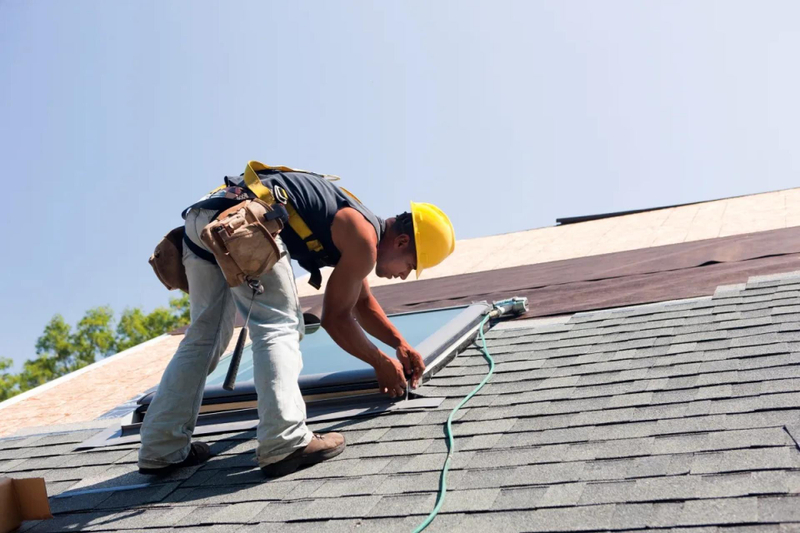What is AS1657 and Why It Matters in Australia
When working at heights, even a small mistake can lead to a serious injury or worse. That’s why safety rules are so important—and in Australia, the AS1657 standard plays a key role.
AS1657 is an Australian Standard that sets safety guidelines for fixed walkways, stairways, ladders, and guardrails. These are the systems workers use every day to access rooftops, platforms, and high workspaces.
Whether you manage a warehouse, a commercial building, or an industrial site, understanding and following AS1657 helps keep your team safe, protects your business from liability, and shows that you take workplace safety seriously.
Why AS1657 is Important for Australian Businesses
Australia’s workplace safety regulations are strict—and for good reason. Falls from heights are one of the biggest causes of serious injuries in the country. AS1657 gives businesses a clear, detailed guide on how to design and install safe access systems.

Here’s why compliance with AS1657 matters:
- It prevents falls and injuries. Compliant systems are designed for safety, reducing the chance of slips or falls.
- It protects your business. If an accident happens and your system isn’t compliant, you could face legal trouble or heavy fines.
- It builds trust. Staff are more confident when they know their work environment is safe.
- It meets insurance and regulatory requirements. Many insurers ask for proof of AS1657 compliance before providing coverage.
What Does AS1657 Cover?
The AS1657 standard sets out the requirements for many access and safety systems used in workplaces:
- Fixed walkways
- Platforms
- Stairways and ladders
- Handrails and guardrails
- Fall prevention features
These systems must be strong, stable, and built with the right materials. The surfaces must be slip-resistant, and access must be safe and easy to use, even in bad weather.
Key Points in AS1657:
- Walkways should have a minimum width of 600 mm.
- Stairways must be angled between 26.5° and 45°.
- Ladders should be securely fixed and offer hand support.
- Guardrails must be strong enough to resist pressure.
- Safe clearances must be provided around all access points.
Common Mistakes People Make
Many businesses want to improve height safety—but without expert help, they often make costly mistakes like:
- Installing ladders at unsafe angles
- Using walkways that are too narrow
- Leaving gaps near roof edges without barriers
- Skipping regular inspections of older systems
- Choosing materials that don’t meet Australian weather needs
These mistakes can make systems unsafe and non-compliant—even if they look secure on the surface.
How to Get AS1657-Compliant Systems
Getting compliant isn’t just about buying a few parts and bolting them on. You need a full, engineered solution that fits your building and meets the standard from top to bottom.
Here’s how to do it the right way:
1. Start with a Site Assessment
Every roof and site is different. A professional site visit will identify the unique risks and the best locations for walkways, ladders, or guardrails.
2. Work with Trusted Experts
Companies like Safetylyne design, engineer, and install AS1657-compliant systems that meet both safety standards and building needs. Their experts know how to build access solutions that work long-term.
3. Use Quality Materials and Designs
The best systems are built from strong, weather-resistant materials and designed using CAD (Computer-Aided Design) to fit your roof layout perfectly.
4. Get It Professionally Installed
Poor installation is a common cause of failure. Always use trained technicians who follow the standard and check every detail.
5. Schedule Regular Inspections
Even compliant systems need maintenance. Yearly inspections will help spot damage, wear, or loosening before it becomes a danger.
Who Needs to Follow AS1657 in Australia?

This standard applies to almost every industry that involves work at heights, including:
- Construction sites
- Commercial properties
- Factories and warehouses
- Power and utility stations
- Schools and universities
- Government and council buildings
- Retail centres and shopping malls
Whether it’s for maintenance, inspections, or daily operations, safe roof access is a shared responsibility across Australian workplaces.
Benefits of Compliant Roof Safety Systems
Installing AS1657-compliant systems isn’t just about rules. It also improves your operations:
- Faster, safer access for maintenance and service teams
- Reduced downtime during safety checks and repairs
- Improved confidence among staff and contractors
- A stronger safety culture in your organisation
Plus, when a certified system is in place, you can focus on the job instead of worrying about what might go wrong.
How Safety lyne Supports AS1657 Compliance
At Safetylyne, every roof safety system is designed to meet the latest Australian standards, including AS1657 and AS/NZS 1891.
They offer a full service from start to finish:
- On-site consultation
- CAD-based custom design
- Australian-made systems
- Full installation and testing
- Ongoing inspection and support
Their systems include static lines, walkways, fixed ladders, handrails, and guardrails—all built with quality and durability in mind.
Whether you’re upgrading an old system or installing something new, they’ll help you stay safe and compliant at every step.
Final Thoughts: Stay Safe and Smart with the Right Roof Access
Compliance with AS1657 isn’t just a technical detail—it’s a commitment to protecting people, assets, and reputation. For businesses in Australia, this standard is the foundation of smarter, safer height work.
If you’re ready to protect your team and improve your site’s safety, explore engineered solutions that are reliable, tested, and built to last. Don’t settle for temporary fixes or guesswork.
🔗 Learn more about custom-designed, fully compliant roof access solutions for your site.


